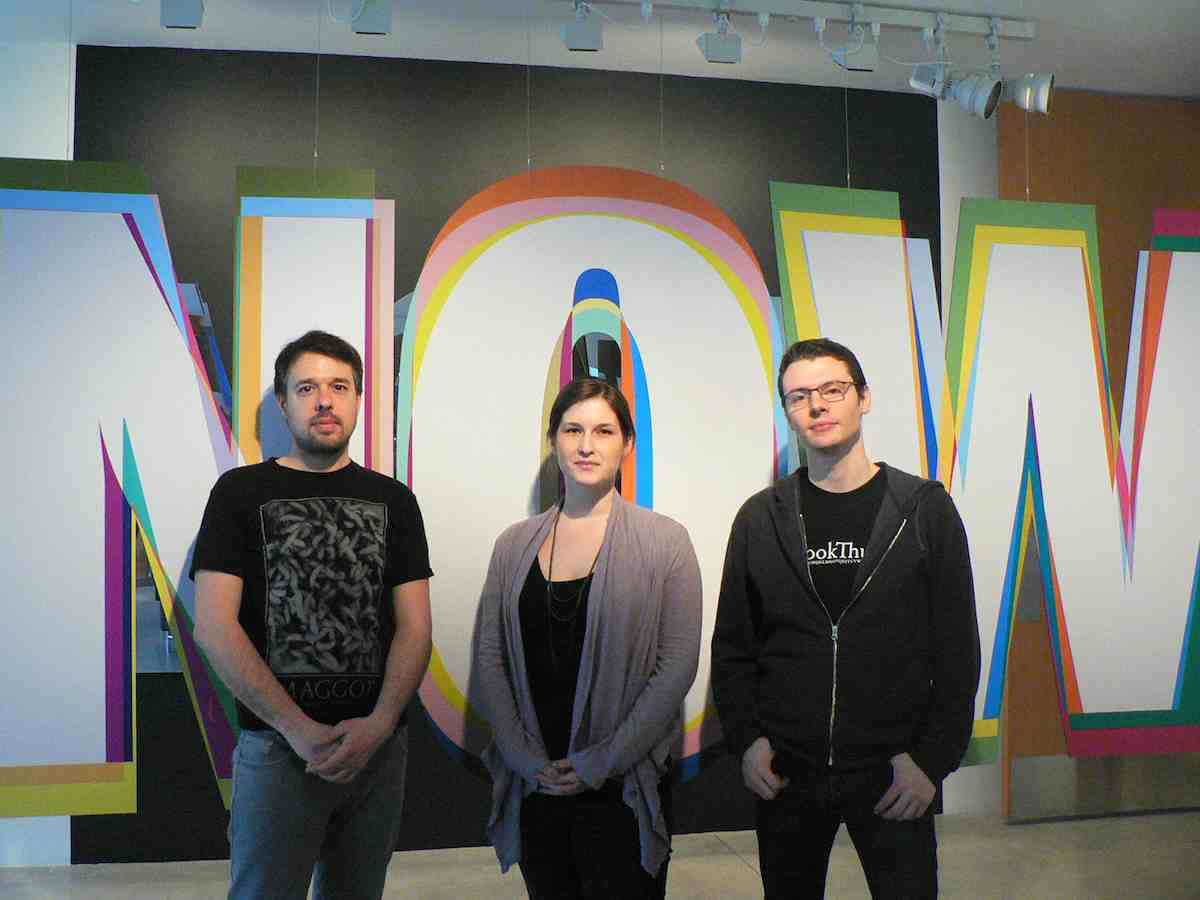LOCAL ARTISTS CREATE COLLABORATIVE CONTEMPORARY PROJECT
By Jelena Subotic
Local artists Pascal Paquette and Sean Martindale have joined forces in a collaborative project just one of many featured in the Art Gallery of Ontario’s Young Gallery (317 Dundas St. W.).
Their project centres on a collaborative and do-it-yourself structure. Paquette and Martindale use their different art backgrounds to incorporate fine art, design, graffiti, and painting into their works. The pieces featured range from video, projections, and sculpture. One piece in particular, Now Up, incorporates mixed media and video projection and captures the changing appearance of a wall as Paquette and Martindale repeatedly write “now” in new and old graffiti styles.
Their NOW installation is collaborative and interactive in nature because it gives visitors a chance to post their own answers on the comment wall.
Questions like “What defines our current moment?” and “What’s on your mind now?” enables people to contribute their own thoughts to the artwork.
Martindale graduated from Emily Carr University and completed his MFA from OCAD University (100 McCaul St.). He mixes fine art and street art with works of natural elements and recyclable materials.
A graduate from La Cité Collégiale in the graphic arts program, Paquette mainly paints, but also works under the name Mon Petit Chou as a graffiti writer.
Collaboration is a central theme with each piece, whether it is with each other, the audience, or other local artists. Paquette and Martindale build on the idea of community existing in art. Whitewash is a video that includes local street art and graffiti artists that each individually paint onto a communal wall. At the end, the wall is painted over by Paquette and Martindale, and then another artist uses the space. The piece represents the reality graffiti artists face when their artwork is whitewashed by the city and other artists.
Paquette says that there are two things with collaboration, “direct collaboration,” which Paquette, Martindale, and Katherine Dennis, curator of the NOW exhibit, are involved with, and “collaborating with the audience,” being able to engage everyone.
Martindale explains that because Whitewash is still ongoing it requires a lot of hard work for both himself and Paquette. Usually at night, they film themselves painting over the wall which is time-consuming but also involves a lot of dedication.
Because of the kind of work he does, depending on the size of the work, “physically they’re challenging, economically they’re challenging,” Paquette says, “As an artist you need to figure out how to make your ends meet and that forces an artist to become more serious.”
Paquette always enjoyed making art but was first interested in pursuing it as a career when he was introduced to Alex Colville on a school trip to the National Gallery of Canada in Ottawa. His teacher explained that Colville is a living artist, a painter that has his work exhibited in galleries, and Pascal says at that moment he thought, “Okay, that’s the job I want.”
Taking inspiration from his daily environment, Paquette says that he goes around the city to find these big walls that he thinks would be great if they were filled with positive art. “I want to give something to my environment, at the same time I want to discuss my environment with others in it.”
He considers himself as a chameleon artist, working with different forms of art Paquette is “not an artist that just does one thing,” but rather his “take on art, that stays the same,” is the advice he gives to young aspiring artists. He says “to really keep going, exploring your voice and add your voice to a bigger conversation.” Networking is extremely important, “but be yourself, talk to your audience as well, don’t just talk to the people you feel matter, talk to everyone.”
The shift street art and graffiti has made—by making a presence in galleries and museums—is something Paquette knows a lot about. He says this shift is extremely important because without it the art scene would be boring. Adding, “Street art in a way, like a lot of forms that are completely different from the norm, challenge the norm.” He says that shifts are important but “happen not because of a select few,” but rather “they happen when everybody decides it’s time to change.”
These projects demonstrate that Toronto has a voice in the art scene and has a lot to offer, Paquette adds. “Toronto is still trying to get on the art world map,” and has some great talents.
There has been a push-pull effect, he says, with some graffiti artists not wanting graffiti in galleries and others for it. “The street artists that do have problems with street art being in galleries generally are talking to themselves,” and it’s important to recognize “the ones who are saying worthwhile things open up to a greater audience.”
The project, featured in the Young Gallery, is part of the Toronto Now series which includes contemporary art projects by local artists. About every two months a new project takes over the gallery.
The NOW exhibit, curated by Dennis, ended April 1. Young Gallery invites the public free of charge and encourages visitors to stay and interact with the art, while even providing a work space and free Wi-Fi access.

